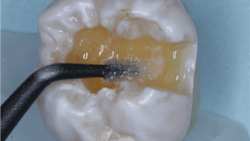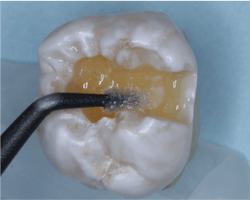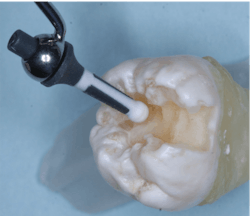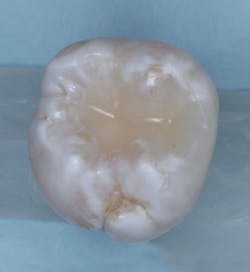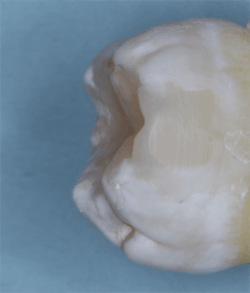The satisfying and productive preventive dental practice
Q: I have lived and practiced in a nonfluoridated area for many years. In spite of my attempts to reduce dental caries among my patients, it has been discouraging to see the gross amount of new caries that occurs year after year. I am doing what I can to stimulate patients toward accepting preventive oral hygiene products and procedures, but it appears that I am not very successful. What are the currently accepted caries-prevention procedures, and how can I implement them and still have adequate practice revenue?
A: Although dentistry has long been identified as being far more preventive-oriented than most other areas of medicine, the emphasis on disease treatment is still the predominant activity of most dentists. In fact, so much time is spent on extensive and extremely expensive procedures to treat the problems related to dental caries, periodontal disease, and occlusal challenges that preventive dentistry has a less-than-optimum emphasis in many practices (figure 1).
You and I understand that problem very well, and we can identify the reasons for the unfortunate treatment emphasis. The preventive procedures and concepts that dentists accomplish require time, effort, and expense that may or may not return adequate compensation to satisfy the average approximate 70% overhead of most dentists. My answer to you will be directed toward reducing the cost of preventive procedures by expanding the clinical functions of staff and ensuring that this important preventive orientation has a major place in your practice.
Zirconia crowns in dentistry: Uses, clinical challenges, and solutions
There is an unfortunate belief among many dentists that prevention is important, but it is not revenue-producing. There is an observable and understandable desire to perform procedures that produce high revenue, such as fixed prosthodontics, endodontics, orthodontics, and implants. I will not refute that belief, nor will I discourage you from doing those procedures. But I will direct your thinking to having other team members do the majority of the preventive procedures in your practice.
The following ADA 2020 procedure codes fall into the preventive realm. Try to find any one of them that you cannot delegate to an educated, competent dental hygienist or assistant! Only one (preventive resin restoration) requires minimal dentist involvement.
- D1110—Prophylaxis, adult
- D1120—Prophylaxis, child
- D1330—Oral hygiene instructions
- D5986—Fluoride gel carrier
- D1208—Topical application of fluoride, excluding varnish
- D1206—Topical application of fluoride varnish
- D1351—Sealant per tooth
- D1352—Preventive resin restoration
- D1354—Interim caries-arresting medicament application
- D0601, D0602, D0603—Caries risk assessment
- D0417—Collection and preparation of saliva sample for laboratory testing
- D0418—Analysis of saliva sample
Can you visualize a practice where every one of these procedures is totally or partially accomplished by a qualified staff member who is well-educated on each procedure, interested in educating patients about them, and clinically capable of accomplishing them?
When these goals are in place, patients will soon recognize the dental practice as emphasizing oral disease prevention and not just treating it. Patients will refer their friends, relatives, and neighbors to such practices, because you have built their trust.
What does the dentist in such a preventive practice do? Just as in the past, the dentist performs the major portion of the treatment procedures. The dentist produces the revenue to make the practice financially sound, while staff members perform the preventive procedures.
Will staff members who are doing the preventive procedures produce adequate revenue for the practice? Absolutely! They should be paid excellent wages. They have no overhead, thus saving more of the gross revenue. In contrast, if the dentist is accomplishing the preventive procedures, the overhead is enormous, and the practice may not have adequate revenue.
The key to making a typical dental practice into a preventive practice is delegation of this highly important aspect of dentistry to the team members. This delegation to staff should be with full responsibility for administration and accomplishment of those procedures. Their success deserves constant praise and potentially bonuses. Further, your patients love their oral health to be routinely monitored by a competent staff member.
What preventive orientation can the dentist have? The following procedures can provide preventive characteristics to your restorative treatment.
Restoration and other procedures
The new conventional glass ionomers (GIs) are very different in working characteristics from the previous ones. You remember older conventional GIs to be sticky, difficult to keep in the tooth preparation while placing, slow-setting, opaque, and overall miserable to place and finish. The new conventional GIs (Equia Forte and Equia Forte HT by GC, IonoStar Plus by Voco, and Ketac Universal by 3M) are much easier to use, puttylike, more esthetic, faster setting, and easier to finish. When used as the primary restoration, all three companies recommend the GIs for small Class I and II restorations, as well as other small, nonstress-bearing restorations, small core buildups, sealants, liners, and bases. As you know, conventional GIs are well-known to release significant fluoride, and unlike composite, they actually seal the margins of tooth preparations.
Do these materials have limitations? Yes. They are weaker, less esthetically pleasing, and wear more than resin-based composite. As a result, in larger preparations, the same preventive characteristics can be achieved by the following technique using both GI and composite.
Can resin-modified glass ionomers (RMGIs) be used instead of conventional GIs? Yes. The RMGIs contain about 20% resin, making that part of the material light-curing and simplifying the placement and finishing procedure. Conventional GIs are currently the major change in GI materials, not the RMGIs.
Dentin replacement
The new conventional GIs can be used as “dentinal replacements” by performing what some call the sandwich technique:
- Prep the tooth.
- Disinfect and desensitize the prep with glutaraldehyde/HEMA, such as GLUMA by Kulzer, MicroPrime by Zest Dental Solutions, or others. Two one-minute applications (figure 2).
- Place conventional GI as noted above on the internal of the prep, replacing the dentin (figure 3).
- Acid-etch the prep and the GI—selective, total, or self-etch (figure 4).
- Wash and dry.
- Place the bonding agent of your choice and cure.
- Place and finish resin-based composite of your choice to replace the enamel (figure 5).
What does this preventive restorative procedure produce?
- Disinfection provided by the glutaraldehyde
- Desensitization provided by the glutaraldehyde
- Chemical seal of GI to the internal of the prep provided by the GI
- High fluoride release provided by the GI
- Long-term caries preventive characteristics provided by the fluoride
- Wear resistance provided by the composite
- Esthetic acceptability provided by the composite
Cementing crowns and fixed prostheses
The most commonly used preventive cement for crown cementation in North America is RMGI and rightfully so. These cements provide significant fluoride release, while resin cements do not. The newer RMGI cements (FujiCEM Evolve by GC and RelyX Luting Plus by 3M) are well-proven to be successful for zirconia crowns and fixed prostheses, as well as for highly caries-active patients having e.max crowns cemented, which are at least 1 mm thick on all aspects. Resin is the usual e.max cement. Also, RMGI is the preferred and most popular cement for all crowns, including porcelain-fused-to-metal (PFM) and metal.
Summary
Preventive procedures assigned to well-educated, motivated, organized, responsible staff members can be highly useful for your patients and provide adequate revenue for the practice. Preventive restorative procedures using newly modified known cariostatic restorative materials provide cariostatic restorations for your patients. Your patients will develop trust in you as you educate them about the value of these materials. New preventive materials are also coming soon, and we will evaluate them as soon as they are available.
It is time to emphasize preventive dentistry in our practices and acknowledge that restorations are only needed when we dentists and our patients have failed to recognize that dental caries is a preventable disease that must be controlled by diet (limiting certain foods), improving our oral hygiene, and placing preventive restorations as needed.
Author’s note: The following educational materials from Practical Clinical Courses offer further resources on this topic for you and your staff.
One-hour videos:
- Making Dental Caries Prevention a Win-Win Concept (Item V5120)
- The NEW Glass Ionomers Really Work (Item V3514)
Two-day hands-on courses:
- Faster, Easier, Higher Quality Dentistry with Dr. Gordon Christensen
- Restorative Dentistry 2—Fixed Prosthodontics with Dr. Gordon Christensen
For more information, call (800) 223-6569 or visit pccdental.com
About the Author

Gordon J. Christensen, DDS, PhD, MSD
Gordon J. Christensen, DDS, PhD, MSD, is founder and CEO of Practical Clinical Courses and cofounder of Clinicians Report. His wife, Rella Christensen, PhD, is the cofounder. PCC is an international dental continuing education organization founded in 1981. Dr. Christensen is a practicing prosthodontist in Provo, Utah.
